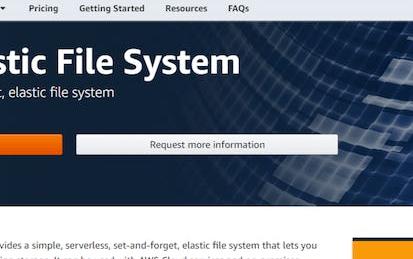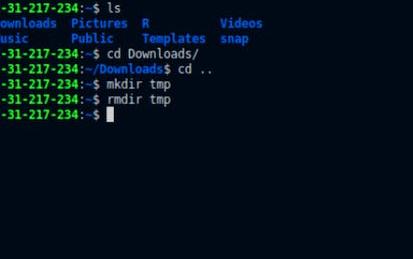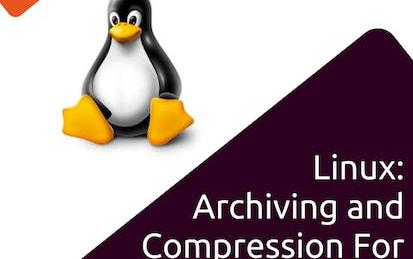

دوراتنا

LCFA Exam Preparation
This course is ideal for those getting started in an IT career as an administrator/engineer who want to become a Linux Foundation Certified IT Associate (LFCA). The LCFA Exam Preparation course is designed to introduce learners to the sponsor organization behind the LFCA certification exam and the details of taking the LFCA exam. This class helps learners prepare for the LFCA exam through a series of self-paced learning, readings, discussions and practice exams.
-
Course by

-
 Self Paced
Self Paced
-
 7 ساعات
7 ساعات
-
 الإنجليزية
الإنجليزية

Introduction to Visual Basic Programming
This course is the second course in a series that aims to prepare you for a role working as a programmer. In this course, you will be introduced to the five main concepts in procedural programming: user input, console output, variable declaration and assignment, decision branching and iteration. Labs will allow the students to apply the material in the lectures in simple computer programs designed to re-enforce the material in the lesson.
-
Course by

-
 Self Paced
Self Paced
-
 28 ساعات
28 ساعات
-
 الإنجليزية
الإنجليزية

Create Docker Container with Flask Seaborn Regression Plot App
Often a software application developed on one platform will not run on another because of software environment differences. Sometimes it can happen when an operating system is updated, for example. Suddenly an application starts to fail. Containers solve that problem by creating a controlled environment in which to run the application, separate from the host machine’s environment. The container contains a specific version of each software package that is known to work with an application at a given point in time.
-
Course by

-
 Self Paced
Self Paced
-
 3 ساعات
3 ساعات
-
 الإنجليزية
الإنجليزية

Foundations of Computer Science
Welcome to Introduction to Programming: Visual Basic. In the course sequence you will learn to write programs that utilize both procedural and object oriented techniques to solve business problems. In the first course in the sequence we will provide you with a solid foundation in the computer science topics that are important to understand when programming Visual Basic. In courses two through four, we will role up our sleeves and start coding in Visual Basic. In these courses you need to have access to a computer that is running Windows, macOS or Linux with the .NET 5 installed.
-
Course by

-
 Self Paced
Self Paced
-
 16 ساعات
16 ساعات
-
 الإنجليزية
الإنجليزية

Tools of the Trade: Linux and SQL
This is the fourth course in the Google Cybersecurity Certificate. These courses will equip you with the skills you need to apply for an entry-level cybersecurity job. You’ll build on your understanding of the topics that were introduced in the third Google Cybersecurity Certificate course. In this course, you will explore computing skills that you’ll use on-the-job as a cybersecurity analyst. First, you'll practice using Linux, an operating system commonly used by cybersecurity professionals.
-
Course by

-
 Self Paced
Self Paced
-
 27 ساعات
27 ساعات
-
 الإنجليزية
الإنجليزية

C Programming: Modular Programming and Memory Management - 3
Enhance your coding skills along your path to becoming a proficient C programmer with the essential concepts of functions and pointers. In this course you will be introduced to the concept of modular programming: that is, dividing up more complex tasks into manageable pieces. You will learn how to write your own functions (just like functions in mathematics for example).
-
Course by

-
 Self Paced
Self Paced
-
 10 ساعات
10 ساعات
-
 الإنجليزية
الإنجليزية

Real-Time Embedded Systems Theory and Analysis
This course can also be taken for academic credit as ECEA 5316, part of CU Boulder’s Master of Science in Electrical Engineering degree. This course provides an in-depth and full mathematical derivation and review of models for scheduling policies and feasibility determination by hand and with rate monotonic tools along with comparison to actual performance for real-time scheduled threads running on a native Linux system.
-
Course by

-
 Self Paced
Self Paced
-
 60 ساعات
60 ساعات
-
 الإنجليزية
الإنجليزية

Build File Utilities with Linux Shell Script
In this 1.5 hour guided project, you will learn about the Linux file system. How to manipulate files in Linux as well as using shell script to build useful utilities. At the end of this project, you will have built 3 useful file utility shell scripts (5 if you participate in the optional practice and cumulative challenge).
-
Course by

-
 Self Paced
Self Paced
-
 3 ساعات
3 ساعات
-
 الإنجليزية
الإنجليزية

Package Installation in Linux
In this one-hour, project-based course, you'll learn several ways to install and update applications in Linux. These include the Software Center, apt, AppImage and something called a "tarball."
This guided project will introduce you to the following concepts:
-Linux Software Center
-apt command-line utility
-Batch files
-AppImage
-Tarball
-
Course by

-
 Self Paced
Self Paced
-
 2 ساعات
2 ساعات
-
 الإنجليزية
الإنجليزية

Build a Guessing Game in C# on Linux
By the end of of this project you will create a guessing game application that pits the computer against the user. You will create variables, static methods, decision constructs, and loops in C# to create the game. Traditionally, C# and other Microsoft languages have been limited to the PC with Visual Studio as the IDE. Dot Net has been open-sourced and is now available on Linux.
-
Course by

-
 Self Paced
Self Paced
-
 2 ساعات
2 ساعات
-
 الإنجليزية
الإنجليزية

Introduction to AWS Elastic File System
Amazon Elastic File System offers a simple interface that allows you to create and configure file systems quickly and easily in AWS. By the end of this project, you will get a real world experience of working with EFS on a production environment. The Idea is to create an EFS in AWS and create a text document using one Linux Instance and access the same document via another Linux Instance.
-
Course by

-
 Self Paced
Self Paced
-
 3 ساعات
3 ساعات
-
 الإنجليزية
الإنجليزية

Build a Python GUI with Tkinter
A graphical user interface can be a nice alternative to using the command line for running programs, as there is no need to memorize how to execute a command with arguments. A label may be added to describe what is needed for the application, for example. There are many choices for building a graphical user interface in Python. Some of them require licensing for commercial use and each have their own sets of learning curves. Using Tkinter avoids the licensing issues and is quite simple to use as well.
-
Course by

-
 Self Paced
Self Paced
-
 3 ساعات
3 ساعات
-
 الإنجليزية
الإنجليزية

Create Python Linux Script to Generate a Disk Usage Report
There are many choices when it comes to writing scripts on Linux. The bash shell script has been a popular choice, since the bash shell itself is a programming language and the commands used in the script match the syntax of the shell. Python is becoming increasingly popular for scripting on Linux because of its simple syntax, easy access to Linux system commands, and powerful libraries with which to create reports, for example.
-
Course by

-
 Self Paced
Self Paced
-
 3 ساعات
3 ساعات
-
 الإنجليزية
الإنجليزية

Using APIs for Network Automation
This course will provide a solid foundation for understanding how APIs are utilized in network automation by discussing important topics such as data encoding formats, REST APIs, and the Python Requests library.
-
Course by

-
 Self Paced
Self Paced
-
 4 ساعات
4 ساعات
-
 الإنجليزية
الإنجليزية

Internet of Things V2: DragonBoard™ bring up and community ecosystem
Do you want to develop skills to prototype embedded products using state-of-the-art technologies? In this course you will build a hardware and software development environment to guide your journey through the Internet of Things specialization courses. We will use the DragonBoard™ 410c single board computer (SBC). This is the first in a series of courses where you will learn both the theory and get the hands-on development practice needed to prototype Internet of Things products. This course is suitable for a broad range of learners.
-
Course by

-
 Self Paced
Self Paced
-
 الإنجليزية
الإنجليزية

Mastering Ansible Automation
Learn the essentials to quickly master automation with Ansible! While this course is designed for learners with limited coding experience, it is helpful (though not required!) to have familiarity with Linux or Unix-like operating systems, the command line interface, and the basics of shell scripting. To allow for a truly hands-on, self-paced learning experience, this course is video-free. Assignments contain short explanations with images and runnable code examples with suggested edits to explore code examples further, building a deeper understanding by doing.
-
Course by

-
 Self Paced
Self Paced
-
 11 ساعات
11 ساعات
-
 الإنجليزية
الإنجليزية

Command Line in Linux
Linux is a popular operating system that is based on the Unix operating system. It has many distributions which have different interfaces for installing software, different user interfaces, and so on. One thing all of the ‘distros’ have in common is that they all have a command line interface, or terminal. In fact, sometimes there is no user interface except the terminal itself. A Linux server running a web application on AWS, for example, may only contain the software required to run the application, and no GUI ‘window’ system at all.
-
Course by

-
 Self Paced
Self Paced
-
 3 ساعات
3 ساعات
-
 الإنجليزية
الإنجليزية

Using Git for Distributed Development
Course 4 focuses on using git for open source software distributed development. Git is a revision control system which arose out of the Linux kernel development community. Git was designed to help developers spread across the globe working on complicated projects coordinate their work in a rational way and keep track of everything they were doing. Overtime, Git has grown to be used by millions of projects today. This course gives you the opportunity to learn how to use git efficiently and make contributions in a relatively short amount of time.
-
Course by

-
 Self Paced
Self Paced
-
 22 ساعات
22 ساعات
-
 الإنجليزية
الإنجليزية

Cloud Computing Foundations
Welcome to the first course in the Building Cloud Computing Solutions at Scale Specialization! In this course, you will learn how to build foundational Cloud computing infrastructure, including websites involving serverless technology and virtual machines. You will also learn how to apply Agile software development techniques to projects which will be useful in building portfolio projects and global-scale Cloud infrastructures. This course is ideal for beginners as well as intermediate students interested in applying Cloud computing to data science, machine learning and data engineering.
-
Course by

-
 Self Paced
Self Paced
-
 19 ساعات
19 ساعات
-
 الإنجليزية
الإنجليزية

Internet of Things: Setting Up Your DragonBoard™ Development Platform
Do you want to develop skills to prototype mobile-enabled products using state-of-the-art technologies? In this course you will build a hardware and software development environment to guide your journey through the Internet of Things specialization courses. We will use the DragonBoard™ 410c single board computer (SBC). This is the first in a series of courses where you will learn both the theory and get the hands-on development practice needed to prototype Internet of Things products. This course is suitable for a broad range of learners.
-
Course by

-
 Self Paced
Self Paced
-
 الإنجليزية
الإنجليزية

Linux: Archiving and Compression for DevOps (tar/gzip)
In this 1-hour long project-based course on Linux: Archiving and Compression for DevOps you will be working entirely on the command line and using powerful Linux commands using tar and various compression commands such as gzip and bzip2 to learn how file archiving and compression works in Linux. You will be archiving a Wordpress directory of files and compressing the archive using various compression formats. You will no longer be mystified by what these commands and options are doing, and you will understand the structure of these various commands better.
-
Course by

-
 Self Paced
Self Paced
-
 3 ساعات
3 ساعات
-
 الإنجليزية
الإنجليزية

Command Line Basics in Linux
In this one-hour, project-based course, you'll learn your first commands for the Linux command-line. You’ll learn how to bring up the manual for any Linux command, how to issue a command as a super-user to access restricted files and operations and how to navigate directories and display Linux command history.
This guided project will introduce you to the following concepts:
-Navigating directories
-Listing, copying and moving files
-Outputting to and amending text files
-
Course by

-
 Self Paced
Self Paced
-
 3 ساعات
3 ساعات
-
 الإنجليزية
الإنجليزية

Create AWS EC2 Virtual Machine Using AWS console
In this 1-hour long project-based course, you will learn how to Create an AWS EC2 virtual machine using the AWS console.
Amazon Elastic Compute Cloud is the service you use to create and run virtual machines (VM), also known as instances. By completing the steps in this guided project, you will successfully launch a Linux VM on Amazon EC2 within the AWS Free Tier. You will also connect to the instance that you launch and then terminate the instance.
-
Course by

-
 Self Paced
Self Paced
-
 2 ساعات
2 ساعات
-
 الإنجليزية
الإنجليزية

Linux Fundamentals
This course dives deep into the world of Linux, beginning with an introduction to its structure and how to run it on different operating systems. From setting up a Linux container with Docker to understanding the command-line interface, learners quickly get comfortable navigating a Linux environment.
-
Course by

-
 Self Paced
Self Paced
-
 18 ساعات
18 ساعات
-
 الإنجليزية
الإنجليزية

Threat Analysis
If you are an associate-level cybersecurity analyst who is working in security operation centers, this course will help you understand Incident Analysis in a Threat-Centric SOC.
-
Course by

-
 Self Paced
Self Paced
-
 27 ساعات
27 ساعات
-
 الإنجليزية
الإنجليزية



